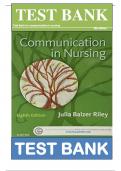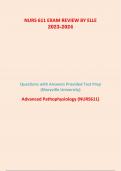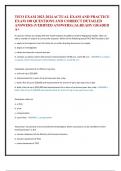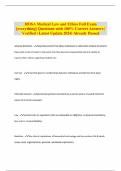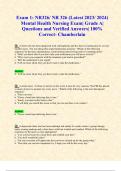Exam (elaborations)
Test Bank for Communication in Nursing 8th Edition by Julia Balzer Riley Questions & Complete Solutions (A+ GRADED 100% VERIFIED)
Test Bank for Communication in Nursing 8th Edition Julia Balzer Riley Questions & Complete Solutions (A+ GRADED 100% VERIFIED)
[Show more]
